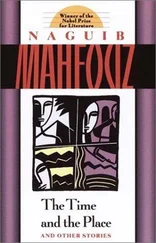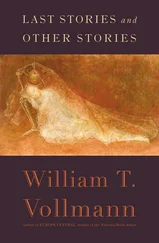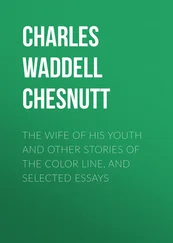Yasushi Inoue - Counterfeiter and Other Stories
Здесь есть возможность читать онлайн «Yasushi Inoue - Counterfeiter and Other Stories» весь текст электронной книги совершенно бесплатно (целиком полную версию без сокращений). В некоторых случаях можно слушать аудио, скачать через торрент в формате fb2 и присутствует краткое содержание. Год выпуска: 2000, Издательство: Tuttle Publishing, Жанр: Классическая проза, на английском языке. Описание произведения, (предисловие) а так же отзывы посетителей доступны на портале библиотеки ЛибКат.
- Название:Counterfeiter and Other Stories
- Автор:
- Издательство:Tuttle Publishing
- Жанр:
- Год:2000
- ISBN:нет данных
- Рейтинг книги:5 / 5. Голосов: 1
-
Избранное:Добавить в избранное
- Отзывы:
-
Ваша оценка:
- 100
- 1
- 2
- 3
- 4
- 5
Counterfeiter and Other Stories: краткое содержание, описание и аннотация
Предлагаем к чтению аннотацию, описание, краткое содержание или предисловие (зависит от того, что написал сам автор книги «Counterfeiter and Other Stories»). Если вы не нашли необходимую информацию о книге — напишите в комментариях, мы постараемся отыскать её.
Counterfeiter and Other Stories — читать онлайн бесплатно полную книгу (весь текст) целиком
Ниже представлен текст книги, разбитый по страницам. Система сохранения места последней прочитанной страницы, позволяет с удобством читать онлайн бесплатно книгу «Counterfeiter and Other Stories», без необходимости каждый раз заново искать на чём Вы остановились. Поставьте закладку, и сможете в любой момент перейти на страницу, на которой закончили чтение.
Интервал:
Закладка:
The colored frontispiece was a drawing of a young man wearing a hood like the headgear of court nobles. Carrying his aged mother on his back, he was making his way through the thick underbrush as he climed up a steep mountain. The mother's hair was white but her face seemed exceedingly young, so that the combination produced a slightly weird effect. The rays of the full moon tinted the entire scene blue everywhere — the trees and grass and earth — and the shadows of the two people were imprinted in bold relief in black over the ground like spilled ink. It was just a coarse, common picture, but even so the sadness inherent in the story and the scene still rose from the superficies of the character of the picture. For the minds of children, it was probably adequately stimulating.
The months and years flew by. I left the university. About the time I first started working at a newspaper company, I got hold of a volume entitled New Thoughts about Mount Obasute and read it. At that time, I must say, I lacked the patience to read books with any substance; but in a desultory sort of way I usually just dabbled capriciously in any of the miscellaneous books that happened to come my way. It was entirely by a stroke of good luck at the time that I chanced upon this monograph New Thoughts about Mount Obasute , which was one of the "Publications of the Shinano Topographical Society/' and I set it aside in my library.
The evening that I bought it, I looked thoroughly over the first part of the volume, lost interest in the later sections, and closed the book. Even at that, however, I was able to acquire a certain amount of knowledge of the thinking with regard to Mount Obasute, knowledge which could not possibly be of any earthly use to me as a reporter.
As a result of the labors of the author of New Thoughts about Mount Obasute , I learned:
that the Mount Obasute legends about abandoning elderly people first appeared as literature in the Tales of Tamato;
that these tales concerning the disposal of old people probably were imported from India but set in a local environment and were transplanted into Japan along with the importation of Buddhism;
that apart from these importations, the practice of obasute must have existed in Japan in very ancient times;
that legends about the practice of obasute had been handed down in the oral tradition of every province, but except for the Legend of Mount Obasute of Shinano Province, into which many of the other legends were incorporated, the others have all been lost; that, presumably, the fact that Mount Obasute became famous as a moon-viewing site in itself contributed to the assimilation of all such legends into the Legend of Mount Obasute;
that, furthermore, the obasute practice itself had been attributed to different mountains in various historical eras — Obase-yama,* in ancient times; Kamuriki-yama, in the Middle Ages;
that it was only in modern times that the area around Obasute Station on the Shinonoi Railway Line emerged for the first time under the name of Mount Obasute.
These things I learned from the travails of the author of New Thoughts about Mount Obasute.
After the passage of several more years, I read the book again for an entirely different purpose, (incidentally, assembled in this book there were virtually all the haiku and tanka relating to moon-viewing at Mount Obasute by all the great poets in the literary history of Japan) because I was interested in determining how the various famous poets dealt with the same subject, moon-viewing against the backdrop of the same setting, Sarashina. From this point of view, I guess I had a pretty punctilious concern about such matters.
The haiku , excerpts from several collections such as Obasute and Lotus and Cutting Rice-Plants , were assembled from the works of a host of haiku- poets led by Basho, Buson, Issa, and others. The tanka were selected only from poems which thematicized Mount Obasute, but they were drawn from anthologies of every era and included the names of such poets as Tsurayuki, Saigyo, Sanetomo, Teika, and Norinaga.
But what I remember as being the most deeply moving among all these great haiku and tanka was one which the young man who appears in the Tales of Tamato composed as he watched the moon hanging over Mount Obasute after returning home from leaving his mother on the mountain. The poem goes:
Seeing the clear moon
Hang o'er Mount Obasute,
Oh, Sarashina!
What solace is there for me—
How can my heart be consoled?
Leaving aside the entire question of the skill of execution of the poem itself, I could visualize this one as a poem by the hero of the story and not simply a moon-viewing verse, and the drama behind it gripped me.
From the pure aesthetics of tanka of course, its value probably could be questioned, but more than any work on moon-viewing at Mount Obasute, this poem by the man in the story stirred me immensely. The theme of this tale, which had been etched on my heart during my childhood, returned to me transformed here as a poem.
II
FOR A LONG time I really knew nothing about either Obasute Station on the Shinonoi Line or the immediately surrounding area. I had made trips in that direction, but mostly I came to that area at night, or even if it was during the day, I passed the station without noticing it and never had any particular connection with it.
It was my mother who sometime later provided me with the occasion to recall the Legend of Mount Obasute. Apropos of nothing, my mother suddenly said, "They say that Mount Obasute's a famous place for moon-viewing, so the old folks may have been quite happy even though they were abandoned there. If even now there was an ordinance that old people had to be gotten rid of, I'd go happily. I think it would be just fine to be able to live alone. Besides, if you have to be discarded, you may even get used to it."
My mother was just seventy. Her words grated on the ears of the members of my family who heard them just like sarcasm. My younger brother and sisters were also there at the time, and they all took on expressions of surprise and shock. This occurred at a time when there were those post-war shortages of everything; it was a time when the general attitude toward the family system showed signs of hysterical change, and there were all those petty disputes that happen between the young people and the old men and women. My family was certainly no exception, but by this I do not mean that every problem was of such magnitude as to make my mother consider escaping from the family, so to speak. My mother, realizing that she had just reached seventy, the age to be left in the mountains in the world of obasute legends, presumably because of the strength of her pride and the spirit of stalwartness with which she was born, took it into her head instantly to defy the atmosphere of this post-war period which so closely resembled something in those legends.
Like the old character depicted in that children's picture book, my mother's hair was white, but she had a bright youthful complexion and there wasn't a single wrinkle in her face. For a while, I eyed her face without a word. She had been raised with a dislike for old people, but now she herself was chronologically a creditably old woman. I felt a compassion for this mother of mine who had become so conscious of her old age and had such a defiant attitude about it. Curiously, from then on, I became obsessed by the whole setting of the Shinano obasute story.
Shortly after that I had many opportunities to take trips in connection with my work, and several times a year I had to go to the Shinano area. When I used the Chuo Line, I often passed the small Obasute Station nestled in among the hills. It became impossible for me to regard with the same dispassion as I viewed the scenery at other places either the Zenkoji Plain, which opens out from there in a vast expanse, or the Chikuma River, which meanders over that plain in a thousand curves, as its name implies, glittering with a cold luster like the belly of a snake. On the other hand, sometimes I took the Shin-etsu Line. Since trains on this line run along the low-lying plain which I used to look out across from the Chuo Line, on reaching the area around Togura, above the window sill I could spot the slope of the hill opposite Obasute Station, which I could just about identify by the red roof of the station. Always, as I looked out across that whole stretch of land in this vicinity, I was filled with a sort of emotion as I wondered about things connected with obasute.
Читать дальшеИнтервал:
Закладка:
Похожие книги на «Counterfeiter and Other Stories»
Представляем Вашему вниманию похожие книги на «Counterfeiter and Other Stories» списком для выбора. Мы отобрали схожую по названию и смыслу литературу в надежде предоставить читателям больше вариантов отыскать новые, интересные, ещё непрочитанные произведения.
Обсуждение, отзывы о книге «Counterfeiter and Other Stories» и просто собственные мнения читателей. Оставьте ваши комментарии, напишите, что Вы думаете о произведении, его смысле или главных героях. Укажите что конкретно понравилось, а что нет, и почему Вы так считаете.












